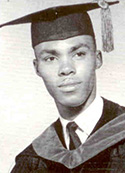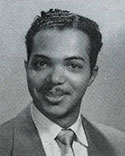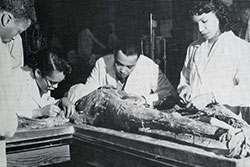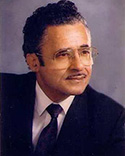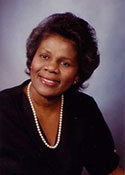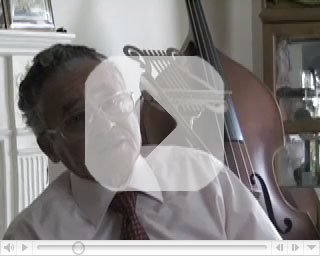New Arrivals, Ongoing Struggles (1955-1980, Section 4)
A native Houstonian, Dr. Blanchard Hollins returned home to open his practice in 1958. Dr. Hollins completed his undergraduate studies at Wiley College, a historically black school in Marshall, Texas, and his medical training at Meharry Medical, graduating from the latter in 1953. He completed a residency in Obstetrics and Gynecology (OB/Gyn) at the Homer G. Homer Hospital in St. Louis, Missouri. Like Dr. Thelma Patten Law, Dr. Hollins was active in Planned Parenthood. Because local white hospitals remained segregated, he initially limited his practice to St. Elizabeth Hospital and Houston Negro Hospital.
In 1953 and 1954, respectively, two brothers, Dr. Michael Banfield and Dr. Edison Banfield, graduated from Howard University College of Medicine. Born in Maryland, they had moved with their parents as their father found work as an ordained minister in various states and spent several years in the armed forces after high school. Dr. Michael Banfield, however, had voiced a desire to be a doctor since he was a junior high student. After the service, he completed college and entered medical school at Howard University in 1949. After receiving his M. D. in 1953, Dr. Michael Banfield completed a one year rotating internship at Los Angeles County Hospital.
Several months before he finished, a pharmacist from Wharton, Texas (some 65 miles southwest of downtown Houston) invited Dr. Banfield to take over a private practice in the town. Unsure about moving to a small town in Texas that he had never heard, Dr. Banfield took time to consider the offer. Within a month the pharmacist came to Los Angeles to discuss the proposal with Dr. Banfield, who remembers, “he made it sound so inviting and I was so broke and in debt that [I thought] maybe I need to do something like this.” 1 As an incentive the pharmacist offered to buy Dr. Banfield a new car. Dr. Banfield refused the car, but agreed to come to Wharton. He practiced there for one year out of his office, but grew frustrated because none of the nearby hospitals were available to him. Dr. Banfield delivered babies in a back room he set up in the office and made many house calls, like doctors earlier in the century, to meet his patient’s needs. He decided to start a practice in Houston in 1955 because the city had at least two hospitals that accepted black doctors on their medical staffs. Dr. Banfield applied for membership in the HCMS when he arrived in Houston, and after a few years obtained the two references necessary for admission.
Dr. Edison Banfield had followed his brother Michael, first to Howard University (medical school class of 1954) and later to Houston. In medical school, Dr. Edison Banfield recalls, he developed an interest in surgery. He completed started his residency in general surgery at Howard’s Freedmen’s Hospital in Washington, D.C. Dr. Edison Banfield decided to move to Houston because his brother could give him with referrals and because the Houston Negro Hospital and St. Elizabeth’s Hospital provided him with institutions where he could practice his specialty. He also liked the weather. In Houston Dr. Banfield meet Dr. Joseph Gathe, a fellow surgeon, and together they maintained a successful practice for many years, maintaining their office in Houston’s Third Ward.
Together Dr. Gathe and Dr. Banfield preformed groundbreaking operations. One operation involving an infant became the subject of an article published in American Surgeon by Drs. Banfield, Gathe, and Dr. Catherine Roett, the pediatrician on the case. The infant had a congenital atresia of the colon, a condition in which invading tissue obstructed the intestines. A congenital condition is one that is present at birth. They also performed a life saving operation on a man with an aortic aneurism.
Houston natives Dr. Levi V. Perry and Dr. Eula Faye Davis Perry first met in the 1950s at a summer school program at Texas Southern University. Both wanted to be doctors from a young age and worked hard to reach their goal. They hoped to attend medical school in Texas, but Jim Crow laws stood in the way. Dr. Eula Perry applied to Southwestern Medical School in Dallas, but despite her qualifications, she was denied admission, according to school officials, because she was black.
Neither Baylor University Medical School nor the University of Texas Medical Branch sent her an application.
Although UTMB had accepted some black students in the preceding decades, the University of Texas still limited the number of spaces for African Americans. Howard University College of Medicine, however, accepted both Levi Perry and Eula Faye Perry. After graduation in 1961, they returned to Houston. It was home and they had dreamed of serving their community. Dr. Eula Faye Perry, although trained as a pediatrician, initially worked at the Veterans Administration and shared a private practice with her husband. Dr. Levi V. Perry completed his residency in internal medicine and cardiology at Baylor College of Medicine in Houston, where he is now an Assistant Clinical Professor of Medicine.


